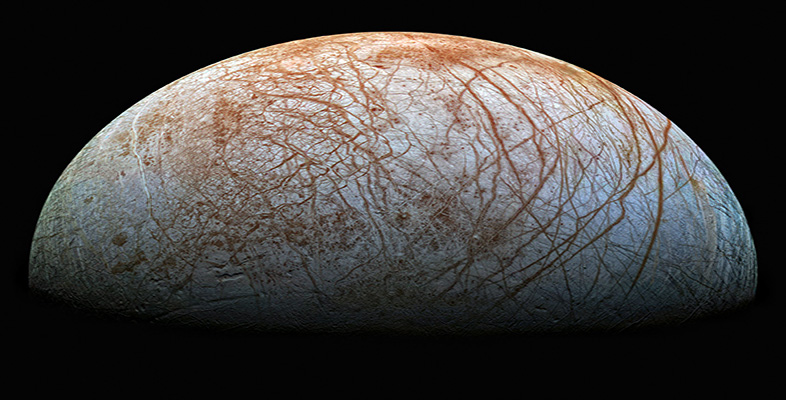2 Europa
2.1 Introduction
Europa's surface is fascinating, if often perplexing, to study. One of its special characteristics is its brightness. It has an albedo of 0.7, which is exceeded among icy satellites only by Enceladus and Triton. (The 'albedo' of a body is simply the fraction of the incident light that is reflected. The higher the albedo, the more light is reflected, and the brighter the body appears.) Overall brightness is one indicator of the youth of an icy surface: the brighter the icy surface, the younger it is. Ganymede (albedo 0.45) and Callisto (albedo 0.2) are much darker. This distinction is not usually apparent when comparing images of their surfaces (for example see Figures 10a and 11a in Section 1.3, Callisto and Europa respectively), because the brightness of each image has usually been adjusted to show features on each to best advantage.
The midday temperature is about 130 K (about −140 °C) at Europa's equator and about 80 K (about −190 °C) at the poles. Europa's axis of rotation is perpendicular to the plane of its orbit, which is tilted at less than half a degree relative to Jupiter's equatorial plane. Europa experiences virtually no 'seasonal' changes in illumination during its orbit about Jupiter or during Jupiter's twelve-year orbit of the Sun, because Jupiter's axial inclination is only about 3° (so Jupiter itself virtually lacks seasons too).
Galileo detected a magnetic field about Europa, which could be generated by motion within its iron core or within a salty (and therefore electrically conducting) ocean beneath the ice. The highest-resolution images of Europa sent back by Galileo have pixels representing areas about 6 m across. Such detailed images cover only a small fraction of the total surface. Nine per cent of Europa was imaged at better than 200 m per pixel and about half the globe was imaged at better than 1 km per pixel. This was a great advance on the coverage provided by Voyager, whose best images of Europa have pixels representing areas 1.9 km across. You will examine plenty of images of Europa shortly, but first it is worth establishing what we know about the composition of the ice.
